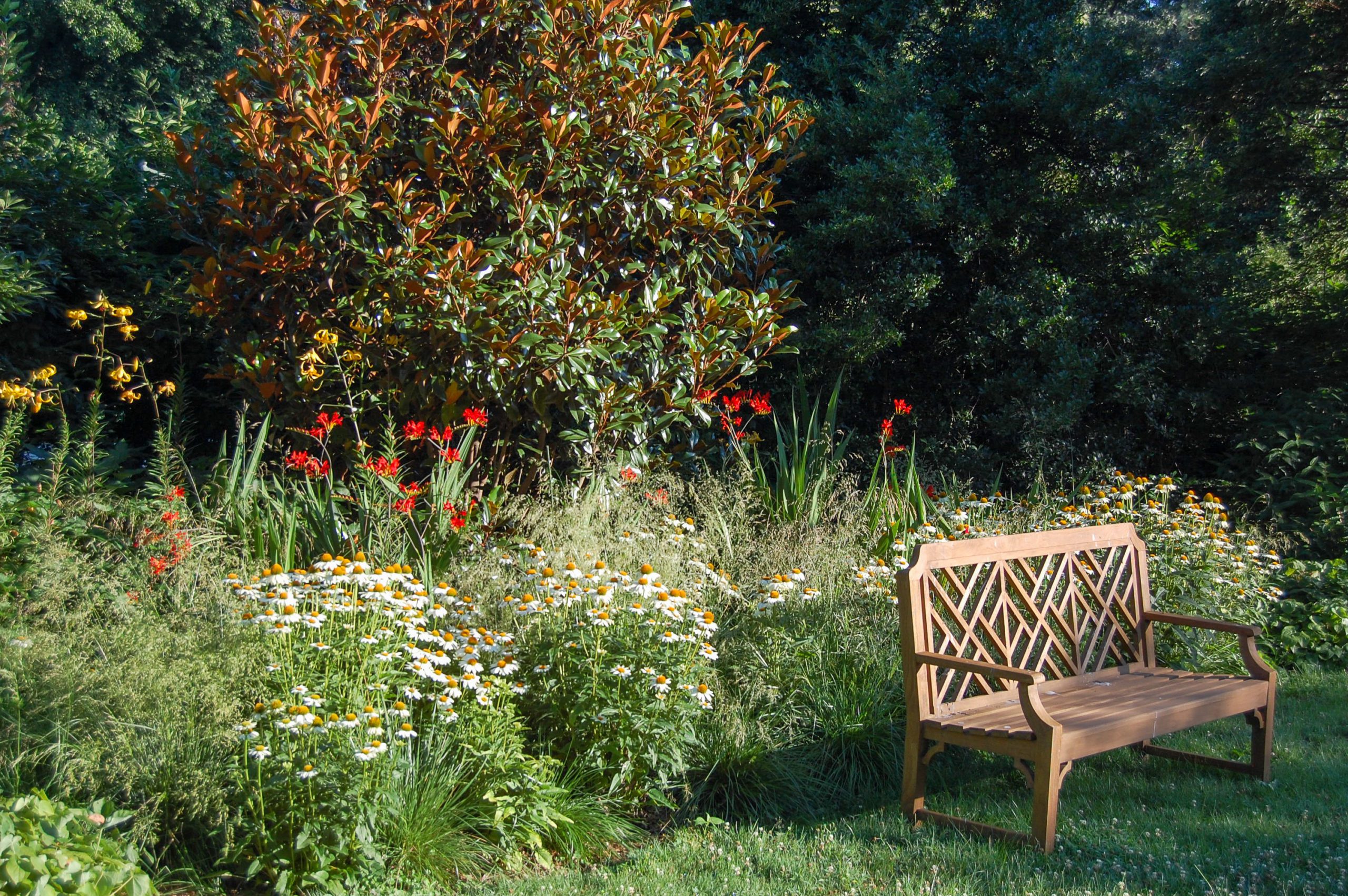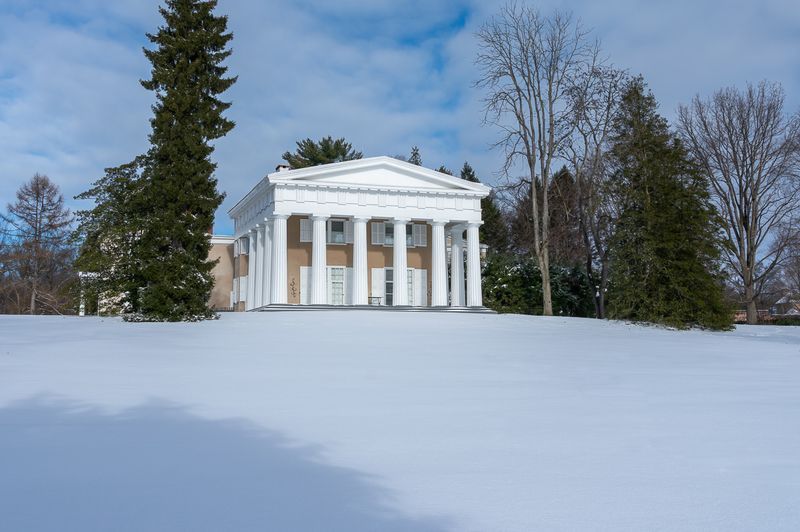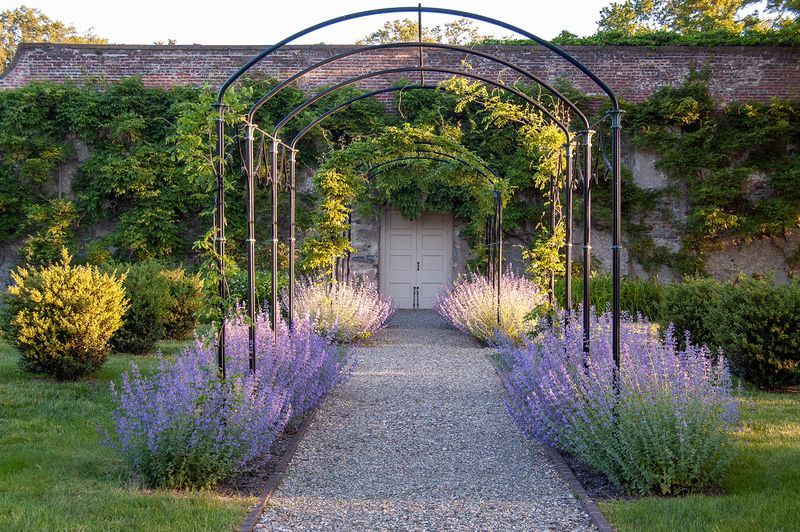September 2, 2021
Down on the Farm: A Summer of Produce from Andalusia in 1870
In 1870, five years after the Union victory in the American Civil War, the City of Philadelphia was a hustling, bustling metropolis of approximately 675,000 people, and growing in both population and geographic size. The newly reunited United States of America was in the midst of its post-Civil War Industrial Revolution, and Philadelphia and the surrounding region was right in the thick of it with rapidly developing industries in textiles, locomotive manufacturing, iron and steel production, shipbuilding, sugar refining, and soon, petroleum refining.

A farmers market in Philadelphia 1875. J.M. Walker illustrator. Library of Congress image.
Philadelphia had a number of public markets which kept the city’s residents well provisioned with all manner of foodstuffs, mainly from the surrounding farm regions. One of those farms, 13 miles up the Delaware River, was the Biddle estate, Andalusia. At that time, Andalusia was not only the country retreat of the descendants of Nicholas Biddle, but was also a working farm of approximately 100 acres. One of the main crops produced at Andalusia for the Philadelphia food market was fruit, such as peaches, nectarines, and pears, but especially table grapes. Designed and built in the 1830s by architect Thomas U. Walter, as late as 1870 Nicholas Biddle’s innovative, heated greenhouses called the Graperies, were still abundantly producing table grapes into the fall, well past the normal summer growing season for grapes.
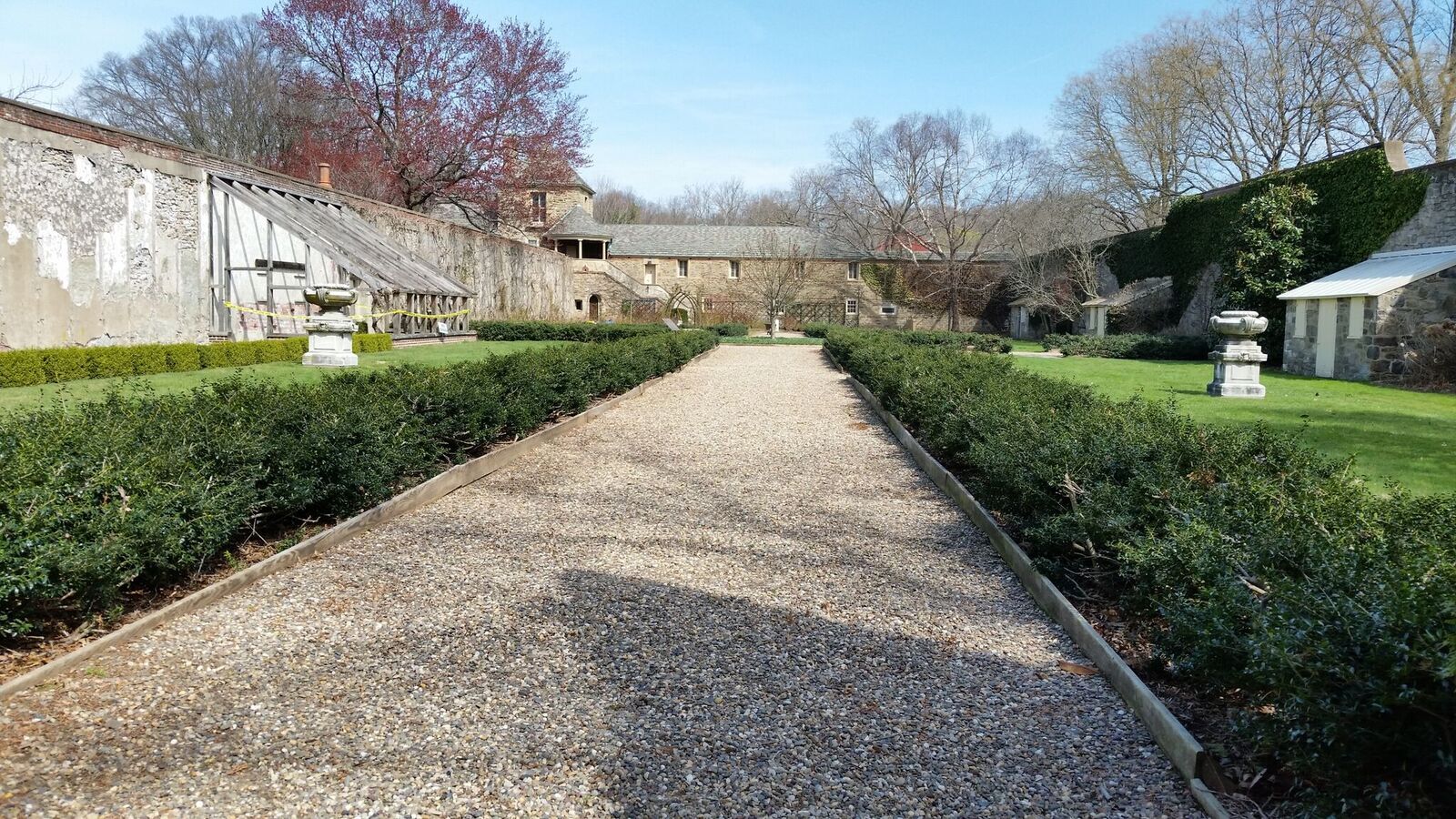
Reconstructed green house on the left in Andalusia’s Walled Garden. In the 19th century, the walls were lined with greenhouses and called the Graperies.
Research into Andalusia’s farm records in the Archives revealed an account book kept by Craig Biddle and a folder containing expense vouchers for Thomas Doyle.* He apparently was a senior farm employee who enjoyed the trust and confidence of Judge Craig Biddle. The folder also contained 14 receipts Doyle received during 14 round trips. These daytrips were most likely by the steamboat that used to stop at the wharf at Andalusia on its way to and from Philadelphia, where Doyle sold fruit from Andalusia at the public markets. The records show that Doyle made these trips during the months of August, September, and October, 1870.
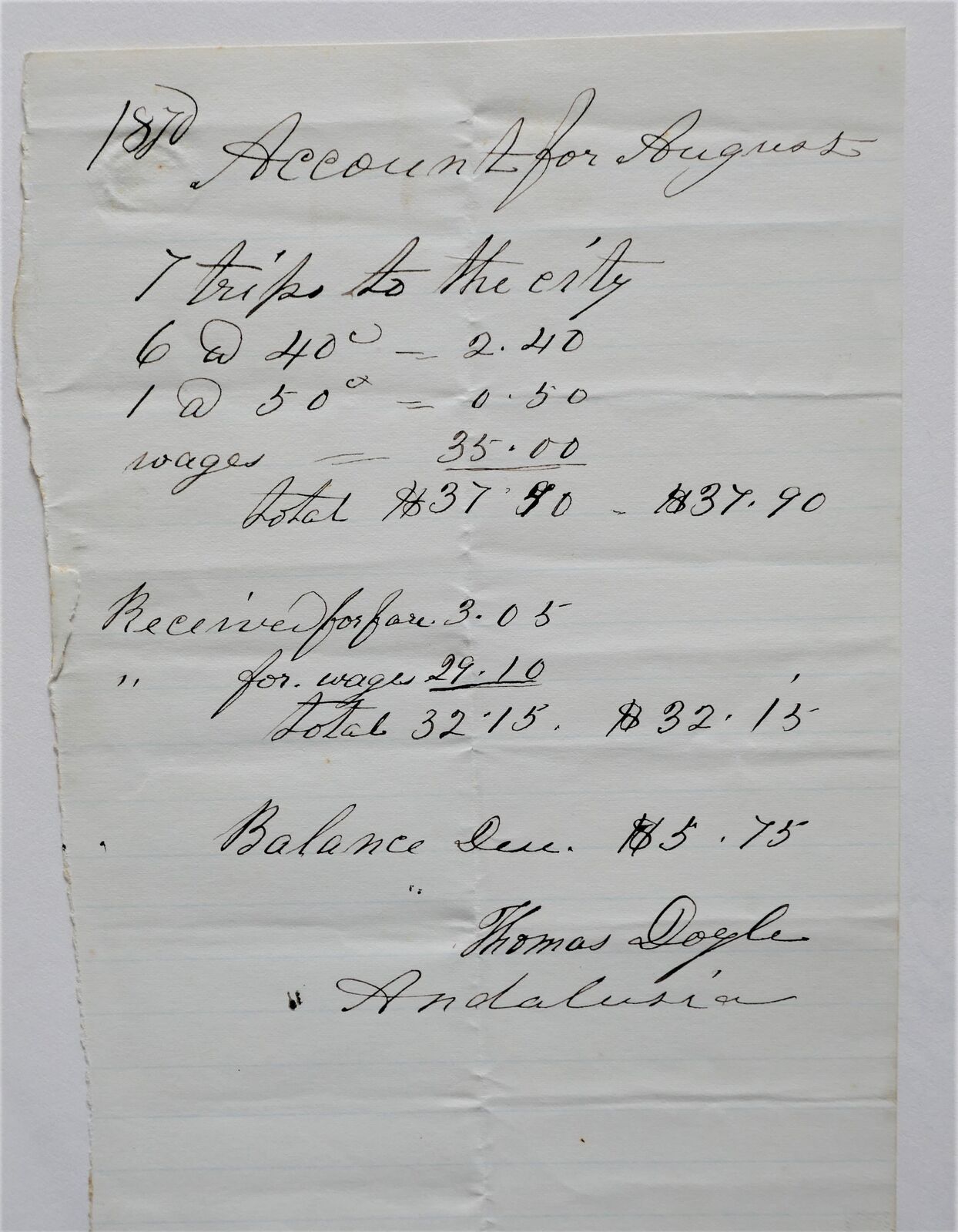
Thomas Doyle’s August, 1870 voucher.
During six trips in August, Doyle sold three and a half dozen peaches, 25 and 1/2 dozen nectarines and pears, and 107 pounds of table grapes to fruit vendors in the markets, for which he brought $108.55 in cash back to Judge Biddle.
In September, Doyle made six trips from Andalusia to Philadelphia to sell fruit to the vendors. He sold them 19 dozen peaches and nectarines, and 114 pounds of table grapes, and brought $113.42 in cash back to Judge Biddle.

Fruit sales for September 22, 1870.
And in October, Doyle made his last two trips where he sold 11 dozen peaches to the fruit vendors for $14.75. In total, Doyle brought $236.72 in cash back to Judge Biddle from the 1870 fruit season. By today’s standards, $236.72 doesn’t sound like a lot of money, but it would be equal to $6,957.21 in 2021 US dollars and would have helped pay expenses for the estate. Just a few years later, a storm destroyed the greenhouses, bringing an end to a productive crop at Andalusia.
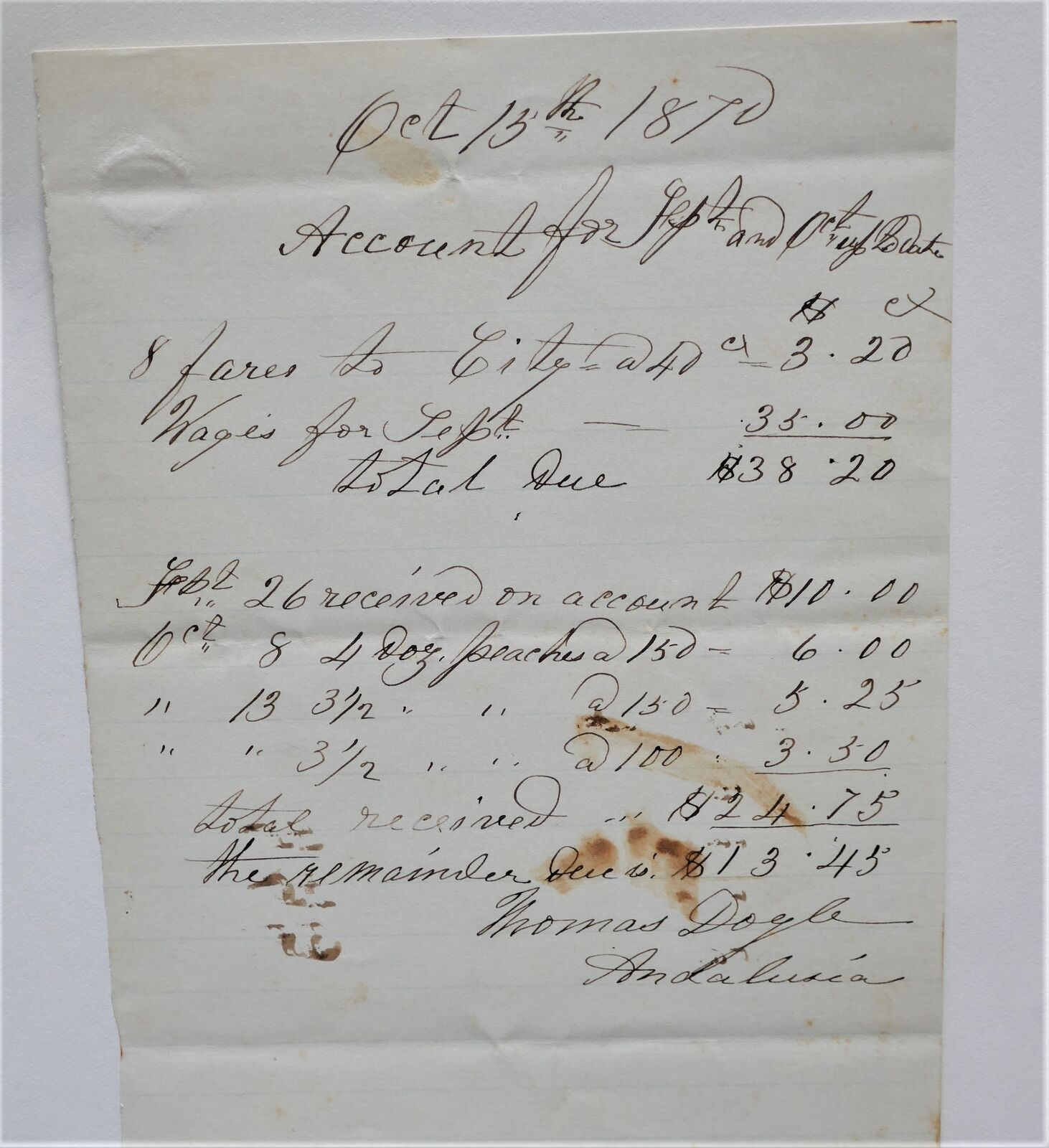
Thomas Doyle’s September & October 1870 voucher.
*Census research shows that Thomas Doyle was employed as a gardener. The numbering sequence of dwellings and families in the 1870 census indicates that he no doubt lived in one of the farmhouses on the estate, likely on the adjoining Wharf Road.

1870 US Census Records show Charles J. Biddle family and Thomas Doyle, Gardener.
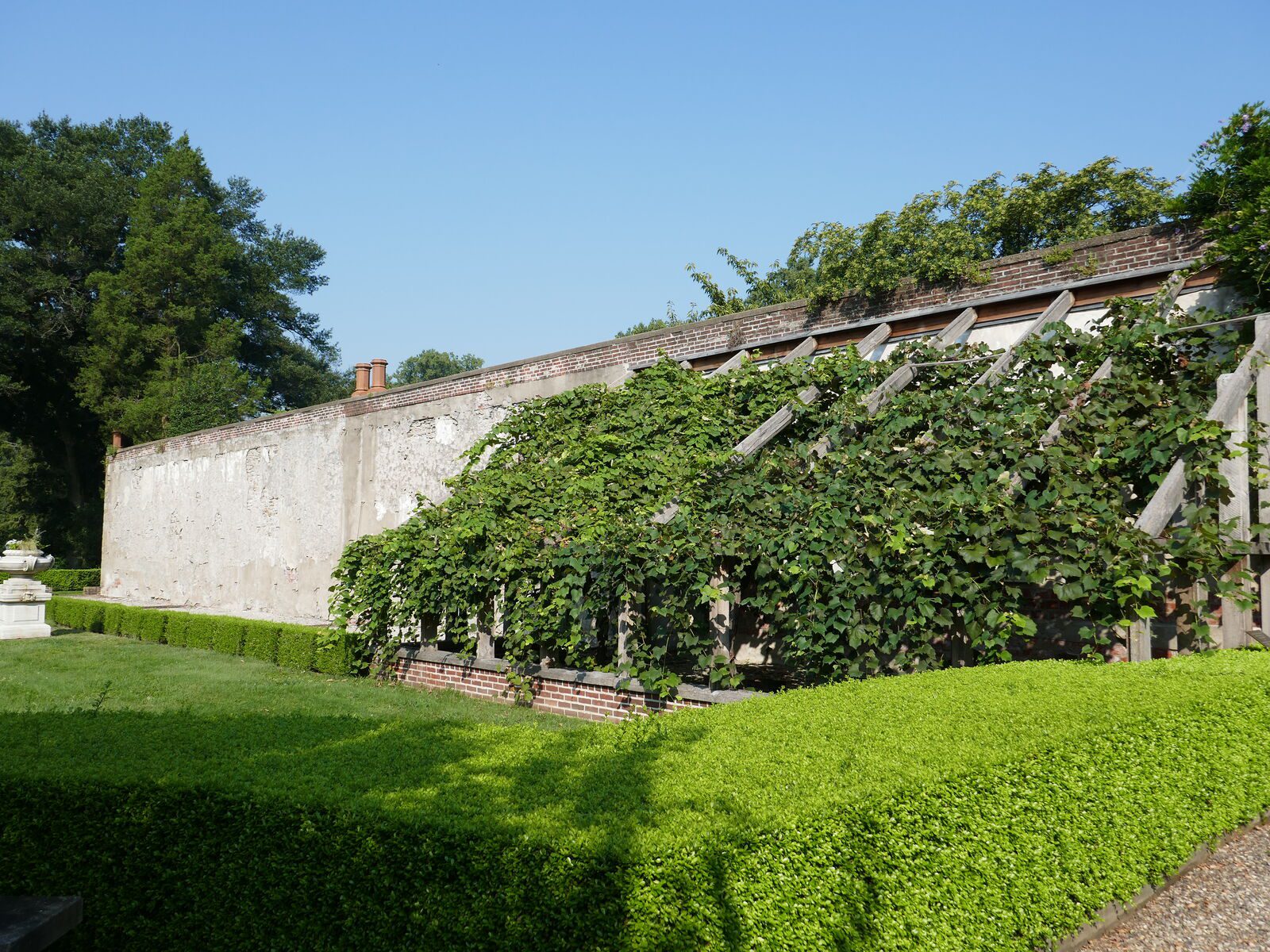
Grapes growing on reconstructed “greenhouse” sans glass. August 2021.
Written by Andalusia guide Bert Wolfe
Additional research and photos by Connie S. Griffith Houchins, Executive Director
Unless otherwise noted, all documents and photos: Andalusia Archives
©The Andalusia Foundation 2021
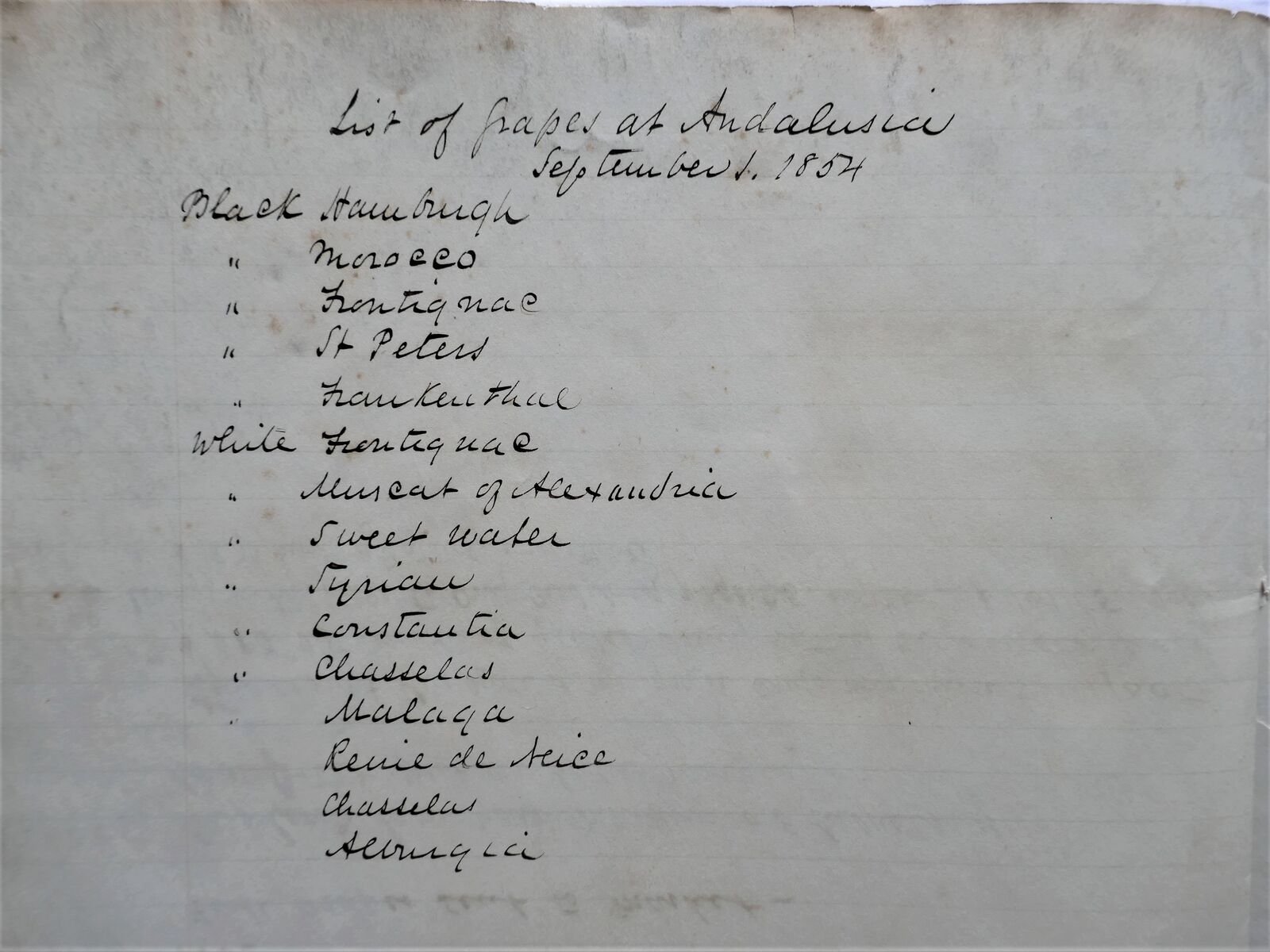
List of grapes grown at Andalusia in 1854. Craig Biddle’s Garden Account Book.

